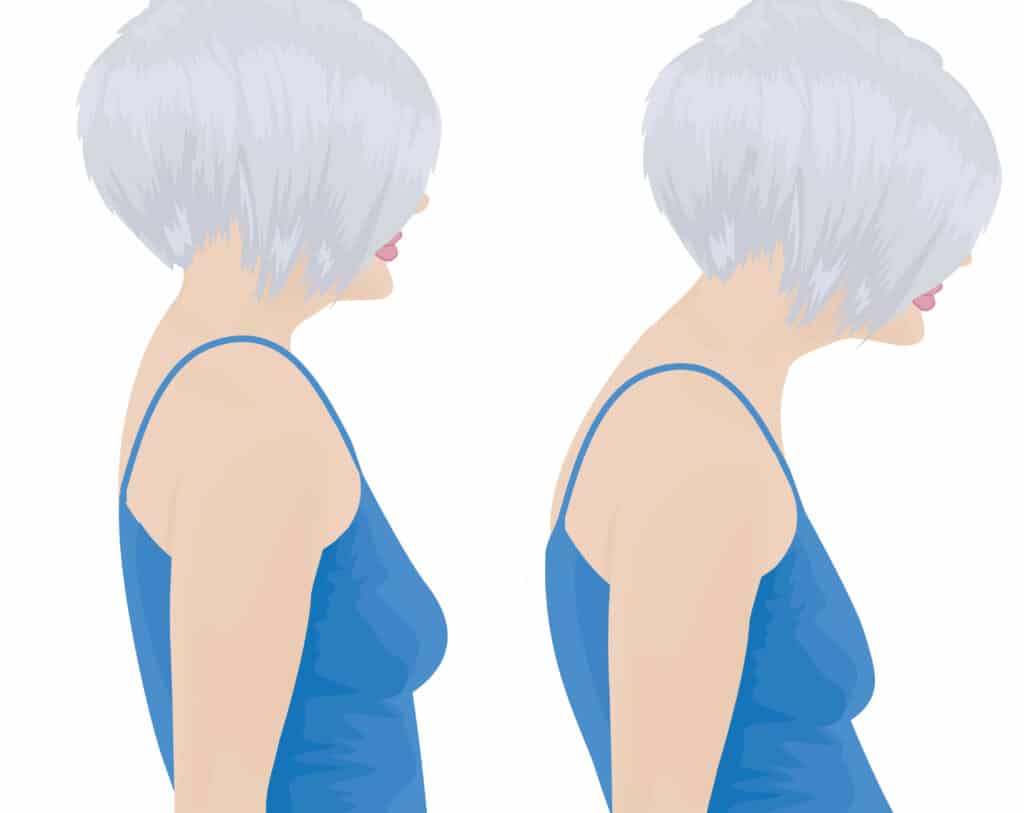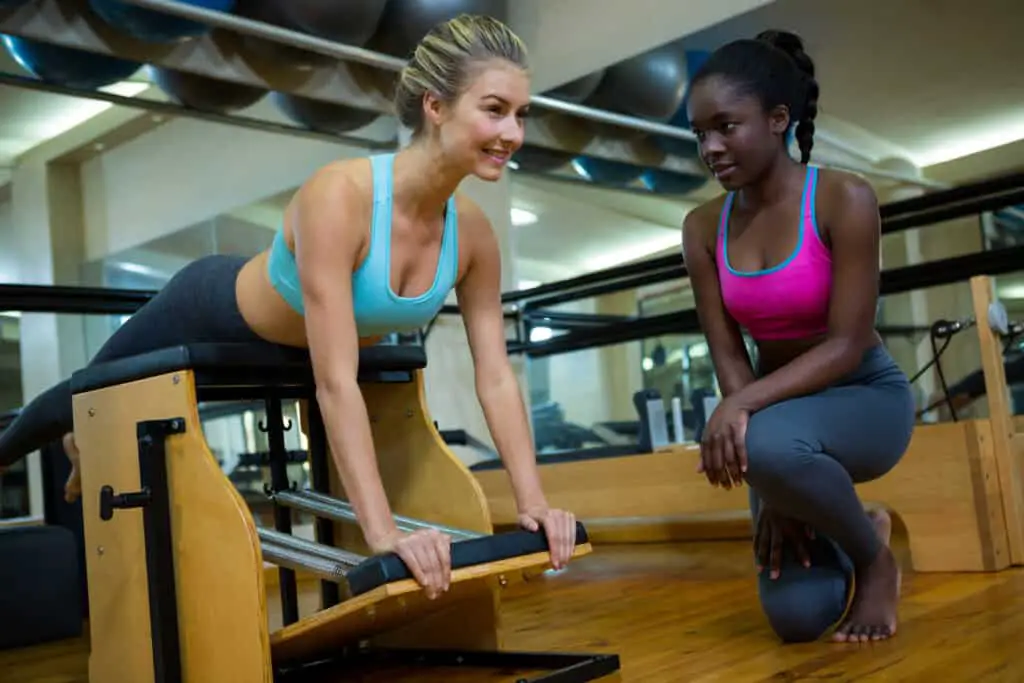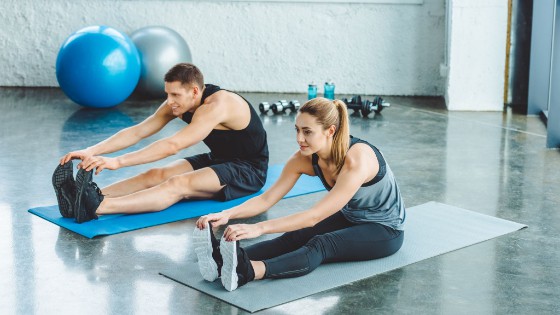When I tell people I’m a Pilates instructor the first thing they often say is “I bet you can touch your toes”, I imagine Yoga instructors get a similar response!
Does Pilates help flexibility? Yes regular Pilates can improve flexibility and mobility, with a scientific study finding that 20 sessions of mat Pilates could result in just over 19% increase in flexibility, reducing the risk of injury in later life.
As we get older we suffer a decline in flexibility, Pilate exercises are specifically designed to stretch and strengthen the muscles that surround the spine, pelvis and hips. These are the areas that often get tight, which can lead to pain and injury. Pilates exercises can be used to increase flexibility, but the focus is on increasing core strength, not on stretching.
To gain a better understanding of this it is important to understand the difference between mobility and flexibility.
What’s the difference between mobility and flexibility?
The terms mobility and flexibility are often used interchangeably in Pilates, but are they really the same thing? The short answer is no. Mobility is the range of movement in which a joint can move, while flexibility is the length of the muscle. If you can squat all the way down to the ground, but can’t get into a deep lunge pose, then your flexibility needs improvement. If, on the other hand, you can easily get into a deep lunge, but can’t squat or sit down without compensating, then your mobility needs improvement.
To have good mobility, you do need good flexibility. You also need muscular strength and stability to actively manipulate the joints and this is where Pilates comes in.
Pilates is about the CORRECT movement patterns and if you’re new to Pilates your body may not feel like these exercises are a normal movement.
With practice, it gets easier and your body starts to opt for the new and correct strategy over the old and dysfunctional damaging one. This is when you may start to notice your posture improving and that you move more freely.
Pilates exercises and workouts will help you to discover and develop an awareness of how to move optimally.
Why flexibility and mobility are important
Research has shown that as we age we suffer a loss of flexibility, reducing our quality of life. As our bodies age our posture, balance and movements can all decline, potentially leading to injuries.
Think about your day: How many hours do you spend at a computer or driving? Many hours will be spent sedentary and inactive, apart from the tap tapping of your fingers on a keyboard, or holding a steering wheel, mostly looking straight ahead.
The thing is, whilst the body is great at adapting to imposed demands, your body is meant to move. Our skeletal structure was not designed to remain in static positions for long periods of time. Simply put, if you don’t use it you lose it.
If sitting all day my hips are extremely likely to lose range (mobility) in the opposite direction to where I am consistently holding them.

The good news is this: just as our body maladapts, it can re-adapt back to normal with some basic exercises regardless of your fitness level. This is why I advocate Pilates for how it can help to improve your mobility, let’s keep those hips moving and improve your range of motion.
Dynamic mobility exercises provide the strength and stability that leads to improved range of motion and great posture into later life.
How Pilates can help
There are many forms of exercise, physical activity and classes that will impact your flexibility, Pilates is well suited as the series of movements benefits your core muscles, posture, muscle strength and endurance.
You don’t have to spend hours training, introducing a routine of 20 to 30 minutes of Pilates on a regular basis will help improve and maintain your flexibility.
Want to get started? Try this FREE 20 minute Pilates for flexibility routine which doesn’t require any special equipment.
For those looking to attend Pilates classes, consider going to a Pilates Reformer class. If you’re unfamiliar with a Reformer, it’s a piece of equipment used to enhance Pilates training and should only be used by beginners under qualified supervision.

Joseph Pilates developed the idea of his exercise system, known today as the ‘reformer’, during the latter part of World War I. Pilates was serving as an orderly in a hospital on the Isle of Man and began to work with patients. He attached springs to hospital beds to support the patient’s limbs. Whilst working with the patients he and the doctors noticed that they seemed to be recovering quicker.
At the time, this method of rehabilitation was unique, allowing and encouraged movement early on in the rehabilitation process giving support and assistance. It was experiences like this that led him to develop his own distinct method of physical and mental conditioning we know today as Pilates and to design equipment such as the Reformer.
The exercises we perform on a Reformer aid, support and encourage movement, increasing mobility and flexibility, promoting length, strength and balance.
When using the Reformer we push and pull against the resistance of our own body weight, the carriage and the metal springs. As the muscles resist force they lenghten, we refer to this as ‘eccentric muscle contractions’. It is these eccentric contractions and the resulting long strong muscles that PIlates helps you to build that has made Pilates so popular.
When clients use a Reformer for the first time they talk about feeling stretched, they joke about having longer limbs and usually report feeling “fabulous” with many feeling like they are walking out of the room taller than when they entered!
Don’t worry if you don’t want to try the Reformer, I am sure that over time mat exercises or a Reformer class will result in you seeing and feeling a difference in both your joint mobility and flexibility.
Where people can really measure and feel progress is in their everyday life, Pilates will increase your mind body connection, your awareness of how you move and your proprioception the body’s ability to perceive its position in space).
Pilates is as much about education and conscious effort of movement as it is about physical movement. Soon you realize how you should move more effectively and everyday tasks can become exercises to! The next time you squat to pick something up apply what you’ve learnt about your alignment, hip and knee placement, engaging your core, using your breath, neutral spine.
One day you’ll have that light bulb moment, you’ll be completing an everyday task or action and ‘DING’ you just know, you can feel a difference. It may feel easier, more natural, effortless when effort was required before and you know it’s because of your effort on the mat! It’s a great feeling.




